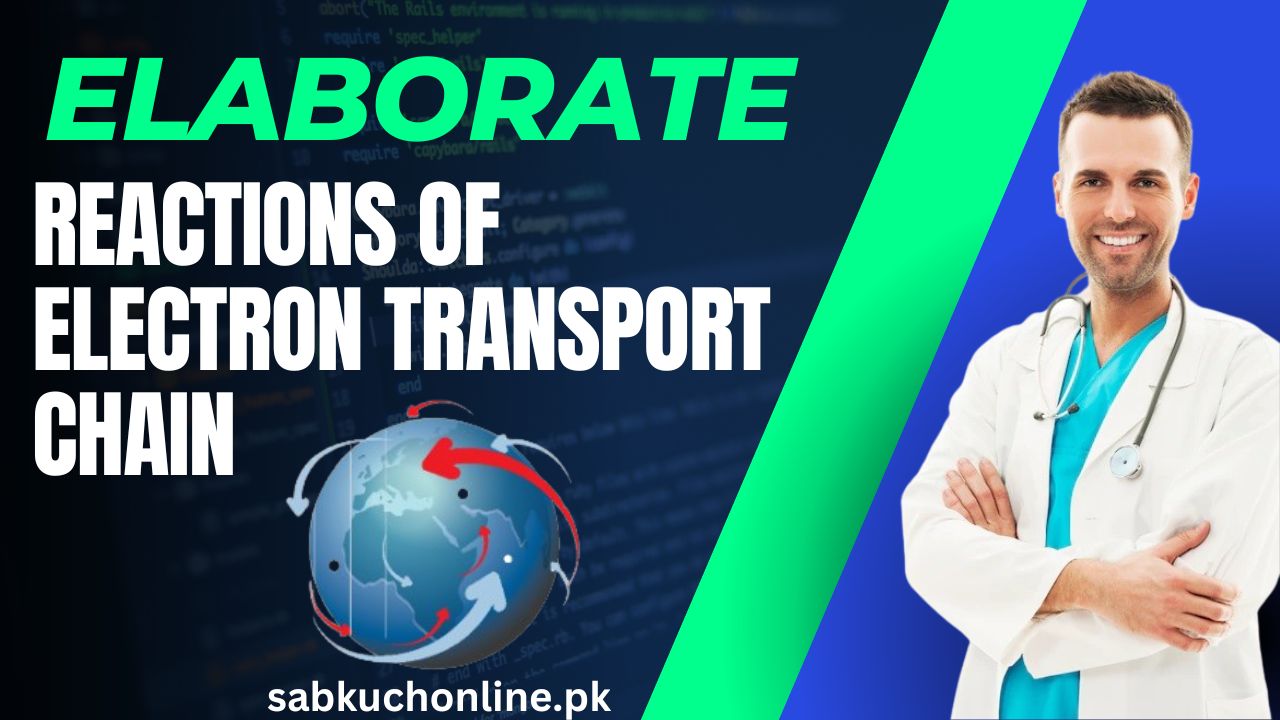The electron transport chain (ETC) is a series of redox reactions that take place in the inner mitochondrial membrane in eukaryotic cells (or the plasma membrane in prokaryotic cells). The reactions involve the transfer of electrons through a series of protein complexes and electron carriers, ultimately leading to the reduction of oxygen to water and the generation of adenosine triphosphate (ATP). Here is an elaboration of the reactions in the electron transport chain:
1. Complex I (NADH Dehydrogenase):
- Reaction: NADH (Nicotinamide Adenine Dinucleotide) donates electrons to Complex I.
- Result: NADH is oxidized to NAD⁺, and electrons are transferred to ubiquinone (Coenzyme Q).
2. Coenzyme Q (Ubiquinone):
- Reaction: Ubiquinone accepts electrons from Complex I.
- Result: Ubiquinone is reduced to ubiquinol.
3. Complex II (Succinate Dehydrogenase):
- Reaction: FADH₂ (produced in the citric acid cycle) donates electrons to Complex II.
- Result: FADH₂ is oxidized to FAD, and electrons are transferred to ubiquinone.
4. Ubiquinone (Coenzyme Q):
- Reaction: Ubiquinone transfers electrons to Complex III.
- Result: Ubiquinone is oxidized back to ubiquinol.
5. Complex III (Cytochrome bc₁ Complex):
- Reaction: Electrons are transferred from ubiquinol to cytochrome c.
- Result: Protons are pumped across the inner mitochondrial membrane.
6. Cytochrome c:
- Reaction: Cytochrome c carries electrons to Complex IV.
- Result: Cytochrome c is reduced.
7. Complex IV (Cytochrome c Oxidase):
- Reaction: Electrons from cytochrome c are transferred to molecular oxygen (O₂).
- Result: Oxygen is reduced to water.
Proton Pumping:
- During Complex I, III, and IV reactions: Protons are actively transported across the inner mitochondrial membrane from the mitochondrial matrix to the intermembrane space.
- Result: This creates a proton gradient, with a higher concentration of protons in the intermembrane space.
Chemiosmosis and ATP Synthesis:
- Proton Gradient: The proton gradient generated by the pumping of protons is utilized to drive ATP synthesis.
- ATP Synthase: Protons flow back into the mitochondrial matrix through ATP synthase.
- Result: ATP synthase uses the energy from the proton flow to phosphorylate adenosine diphosphate (ADP) to form adenosine triphosphate (ATP).
Overall Reaction:
- Oxidation of NADH and FADH₂: NADH and FADH₂, produced during glycolysis and the citric acid cycle, donate electrons to the ETC.
- Electron Transport: Electrons move through the protein complexes and carriers.
- Reduction of Oxygen: Molecular oxygen is the final electron acceptor, leading to the production of water.
- ATP Synthesis: Proton gradient and chemiosmosis drive ATP synthesis.
In summary, the electron transport chain plays a central role in oxidative phosphorylation, converting the energy stored in electrons to a proton gradient, and ultimately using this gradient to generate ATP. The reduction of oxygen to water serves as the final step in the electron transport chain.
